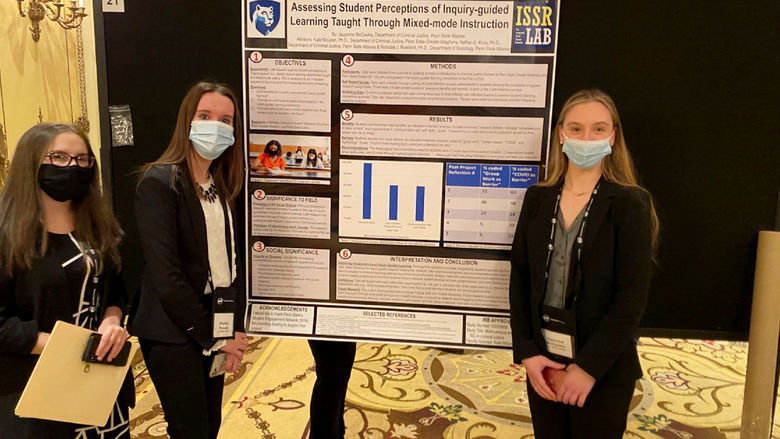Publication of the FPS General Medical Services for Northern Ireland, Annual Statistics 2021/22

The Health and Social Care Business Services organization has today released its General Medical Services for Northern Ireland, Annual Statistics 2021/22.
This national statistics report contains high-level summary information on activity and payments for general practitioners (GPs), GP practices and registered patients. Information is provided at the NI level with additional breakdowns presented at the Local Commissioning Group (LCG), Local Government District (LGD) and Federation GP levels. A number of comparisons with the UK are also included.
The publication is available on the Business Services Organization website at: www.hscbusiness.hscni.net/services/3174.htm
Key points
The key points of the 2021/22 report are:
General medical services
- There were 319 active medical practices in Northern Ireland as of 31 March 2022, down just under 9% from the 350 active in 2014. As the number of practices has fallen, the average number of registered patients per practice increased, by approximately 15%, from 5,500 to 6,340 over the same period.
- At the LCG (Health Trust) level, Western has seen the largest proportional decline in GP practices between 2014 and 2022 (16%). The smallest proportional decrease over this period occurred in the Northern Trust region (5%).
- Despite the reduction in general practitioner practices, the number of general practitioners (excluding substitutes) has increased by 20% to 1,419 since 2014. Of these, almost six in ten (59%) are women, a change notable in the gender profile since 2014 when the majority (54%) were male. It is important to note that the figures presented for general practitioners are headcounts rather than full-time equivalents, so they do not take into account differences in hours worked or changes in the work habits of practitioners over time. time.
- As of March 31, 2022, 2,022,000 people were registered with a GP practice. The LGD with the largest patient population was Belfast (432,000) while Lisburn and Castlereagh had the lowest number of registered patients (120,000).
- In the financial year 2021/22, around 52,500 new patients (for the first time) were registered and almost 39,000 patients were transferred between GP practices in Northern Ireland – largely in line with pre-pandemic activity levels. The equivalent figures for 2020/21 were 44,000 new patients and 29,000 transfers with Covid-19 contributing to lower figures.
- Of the new (first time) patients registered in Northern Ireland in 2021/22, 30% were non-UK nationals. This proportion varied by LGD from 49% in Belfast being non-UK nationals to 12% in Causeway Coast and Glens.
- In 2021/22, BSO processed £342.7 million in payments for the overall cost of GP services in Northern Ireland. The average BSO payment processed per registered patient was £169, an increase of £11 per patient since 2020/2021.
- A large proportion of registered patients (97%) live less than 8 km from a general practitioner’s office. In some of the more urban LGDs (Belfast, Antrim & Newtownabbey, Lisburn & Castlereagh and Ards & North Down), at least 92% of registered patients live within 3 miles of a GP practice.
- At UK level, Scotland has the highest number of GPs (staff) per 100,000 registered population (78.5), followed by Northern Ireland (70.2). This compares to 61.4 GPs per 100,000 people recorded in Wales and 58.0 in England. Again, this does not take into account possible differences between countries in work patterns.
Notes to Editors:
- This is the third year that General Medical Services Statistics for Northern Ireland have been published as a stand-alone report. This information was previously included in the FPS compendiums released in 2017/18 and 2018/19. This report has been produced by the Health and Social Care’s Business Services Organization (BSO) which has been designated as the official statistics producing body under the Official Statistics Order (Northern Ireland) 2012. It provides the definitive source of figures on the activity of the general medical services of the FPS BSO. and finalizes the provisional quarterly figures which have been published during 2021/22.
- The UK Statistics Authority designated these statistics as National Statistics on 11 May 2022. National Statistics status means that official statistics meet the highest standards of reliability, quality and public value. All official statistics must comply with all aspects of the Code of Good Practice for Statistics. They are granted national statistical status following an assessment by the regulatory arm of the Authority. The Authority examines whether the statistics meet the highest standards of compliance with the Code, including the value they add to public decision-making and debate. These statistics were considered as part of a larger assessment of BSO Family Physician Services statistics.
- Family Practitioner Services (FPS) is responsible for annual payments to primary care providers including GPs, dentists, opticians and community pharmacists on behalf of the Health and Social Care Board (HSCB). In 21/22 that figure was just under £950m and included additional support for contractors linked to the covid-19 pandemic.
- Primary care statistics on the number of general practitioners are taken from lists of performers registered to provide these services. The lists maintained by BSO provide headcount rather than full-time equivalent figures, so they do not take into account differences in hours worked or changes in practitioners’ work habits over time.
- GP practice characteristics vary in terms of the number of full-time equivalent (FTE) GPs assigned to a practice, the number of sites from which a practice operates, and the number of patients enrolled in a practice. In cases where a GP practice is spread over multiple sites, it is only counted as one practice and the data presented, including the average number of patients per practice and the distance to the nearest practice, are based on the main cabinet.
- The number of GP registered patients by local commissioning group (Health Trust), local government district and GP federation is based on the location of the practice at which the patient is registered, as opposed to the address from the patient’s home. There are differences between the figures for patients registered by general practitioners and the residential population. In March 2021, the number of individuals on the Registered Patient Index was around 5.5% higher than the population of Northern Ireland in the same month, as measured by the 2021 census. may be due to a number of factors, for example, delays in removing patients from GP lists after death or emigration, cross-border workers registered with a GP in Northern Ireland, or registered patients who do not complete the 2021 census.
- BSO’s payment for GP services presented in this report refers to payments that BSO processed on behalf of the Department of Health’s Strategic Planning and Performance Group for the overall cost of GP services in Northern Ireland. These expenses relate to payments processed in a given year and not the cost of the service provided in that year. It is important to note that, unless otherwise stated, figures relate to the year in which a payment request was processed by BSO and this does not necessarily coincide with when the actual activity took place. (i.e. some requests from a previous year may be processed in the current year while conversely some complaints relating to the activity of the current year may not be processed a later year).
- Whilst a number of UK comparisons have been included in the report, there can be significant differences in the way services are provided between countries which can impact the figures. The relative size of the private sector in the provision of primary care services in each country will be a particularly important factor in this regard, as will the number of hours worked, so care should be taken when interpreting any differences between countries in levels of CSS activity.
- The report itself presents high level summary information with all the detailed data tables recorded in the accompanying Excel appendices. The figures are prepared and published by independent NISRA statisticians working within BSO’s FPS reporting unit.
- Quarterly updates for 2022/23, for key reporting tables, will be provisionally published in the FPS section of the BSO website www.hscbusiness.hscni.net/services/3174.htm. These will be added to the historical quarterly series. The release schedule for quarterly updates will also be posted on the BSO website and all releases, quarterly and annual, will be officially announced on the GOV.UK release schedule. www.gov.uk/government/statistics/announcements
- Electronic copies of the Bulletin and associated Excel tables are available free of charge from: www.hscbusiness.hscni.net/services/3174.htm
- National Statistics: This is a publication of national statistics and therefore follows the Code of Practice for Statistics. Further information on the Code of Practice can be found at: www.statisticsauthority.gov.uk/code-of-practice/
- For more information, please contact:
Information unit
Family doctor services
Organization of business services
2 Franklin Street
Belfast BT2 8DQ - For media inquiries, please contact the DoH Press Office via email pressoffice@health-ni.gov.uk.
- Follow us on twitter @healthdpt
- The Executive Information Service runs an after-hours service For media inquiries only between 6:00 p.m. and 8:00 a.m. Monday to Friday and on weekends and public holidays. The permanent press officer can be contacted on 028 9037 8110.
Share this page






